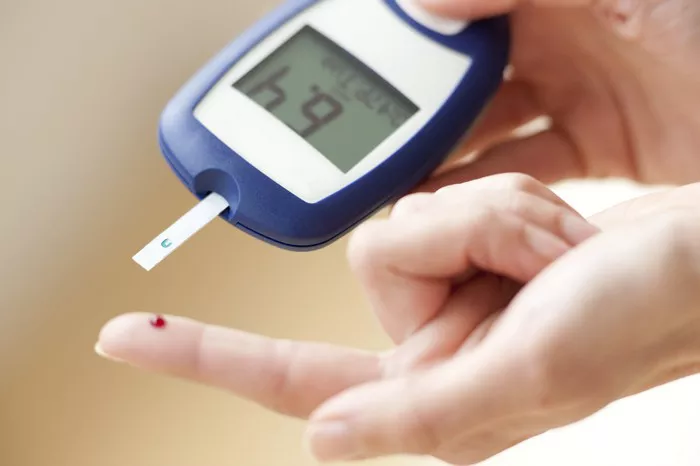Pathophysiology is a term that merges two crucial fields of medicine: pathology and physiology. In the simplest terms, it refers to the study of how disease processes affect the body’s normal functions. While physiology explores the normal functioning of the body, pathophysiology focuses on the changes that occur in response to disease or injury. In clinical medicine, understanding pathophysiology is essential for diagnosing and treating diseases, including chronic conditions like type 1 diabetes.
This article will delve into the meaning of pathophysiology, the importance of understanding it in medical practice, and its specific relevance to various diseases, particularly type 1 diabetes.
Breaking Down Pathophysiology
To better understand the meaning of pathophysiology, it’s helpful to break down the word itself:
Patho-: Derived from the Greek word “pathos,” meaning disease or suffering.
-physiology: Refers to the study of the functions of living organisms and their parts.
Thus, pathophysiology literally means “the study of how disease affects normal biological functions.” This field of study examines the disturbances in physiological processes caused by diseases, abnormal conditions, or injuries, and how these disturbances lead to clinical symptoms.
The Role of Pathophysiology in Medicine
In medical practice, understanding pathophysiology is critical for several reasons:
Diagnosis: Recognizing how diseases alter normal body functions helps clinicians identify the underlying cause of symptoms. Pathophysiology provides insight into the mechanisms of disease, which aids in accurate diagnosis.
Treatment Planning: Knowledge of pathophysiology allows healthcare providers to develop targeted treatment plans. By understanding how a disease affects the body, doctors can choose therapies that address the specific disruptions caused by the condition.
Disease Management: For chronic diseases, such as type 1 diabetes, understanding the pathophysiology of the disease is key to effective long-term management. Clinicians can better monitor disease progression and adjust treatment strategies accordingly.
Predicting Outcomes: By studying the pathophysiology of a disease, healthcare providers can predict the likely course of the disease and anticipate potential complications. This foresight is crucial for preventing and mitigating long-term damage.
Pathophysiology in Type 1 Diabetes
Type 1 diabetes serves as an excellent example of how pathophysiology provides a framework for understanding and managing disease. Type 1 diabetes is a chronic autoimmune disease that primarily affects the pancreas and its ability to produce insulin. The pathophysiological changes in type 1 diabetes lead to widespread metabolic disturbances that affect multiple organ systems.
Normal Physiology: The Role of Insulin
In a healthy individual, insulin plays a vital role in regulating blood glucose levels. After eating, glucose levels in the blood rise, triggering the pancreas to release insulin. Insulin allows glucose to enter the body’s cells, where it is used for energy. Without sufficient insulin, glucose remains in the bloodstream, leading to hyperglycemia (high blood sugar).
Pathophysiology of Type 1 Diabetes
In type 1 diabetes, the body’s immune system mistakenly attacks and destroys the insulin-producing beta cells in the pancreas. The exact cause of this autoimmune response is not fully understood, but it is believed to involve genetic and environmental factors.
Immune-Mediated Destruction: The immune system targets the beta cells, gradually reducing their ability to produce insulin. Over time, this results in an absolute deficiency of insulin, meaning the body can no longer regulate blood sugar levels effectively.
Hyperglycemia and Its Effects: Without insulin, glucose builds up in the bloodstream, leading to chronic hyperglycemia. This state of high blood sugar has widespread effects on the body’s organs and tissues. For example, it can damage the blood vessels, nerves, kidneys, and eyes, leading to complications such as diabetic neuropathy, nephropathy, and retinopathy.
Ketone Production and Diabetic Ketoacidosis: In the absence of insulin, the body is unable to use glucose for energy and begins to break down fat for fuel instead. This process produces ketones, which are acidic byproducts that can accumulate in the blood. High levels of ketones can lead to a life-threatening condition known as diabetic ketoacidosis (DKA), characterized by nausea, vomiting, abdominal pain, and confusion.
Understanding the pathophysiology of type 1 diabetes is critical for managing the disease and preventing complications. Treatments focus on replacing the lost insulin and monitoring blood sugar levels to prevent both hyperglycemia and hypoglycemia (low blood sugar).
The Importance of Pathophysiology in Understanding Disease Mechanisms
Pathophysiology is central to understanding the mechanisms of disease. It bridges the gap between basic biological science and clinical practice by explaining how diseases disrupt normal physiological processes.
For instance, in the case of infectious diseases, pathophysiology helps us understand how pathogens, such as bacteria or viruses, invade the body, evade the immune system, and cause illness. In chronic diseases, such as cancer or cardiovascular disease, pathophysiology provides insights into how genetic mutations, environmental exposures, and lifestyle factors contribute to disease development and progression.
How Pathophysiology Guides Medical Research
In addition to its clinical applications, pathophysiology plays a crucial role in medical research. By studying the mechanisms of disease at the cellular and molecular levels, researchers can identify potential targets for new therapies. For example:
Drug Development: Many drugs are designed to counteract the pathological changes that occur in disease. For example, in the treatment of type 1 diabetes, researchers are exploring ways to prevent the immune system from attacking beta cells or to regenerate beta cells to restore insulin production.
Biomarkers: Pathophysiology research can lead to the identification of biomarkers—biological indicators that signal the presence or progression of disease. Biomarkers are used in clinical practice for early diagnosis, monitoring treatment response, and predicting outcomes.
Precision Medicine: Advances in understanding the pathophysiology of diseases have paved the way for precision medicine, an approach that tailors treatment to the individual based on their unique genetic, environmental, and lifestyle factors. For example, in type 1 diabetes, researchers are investigating how genetic variations influence disease progression and response to insulin therapy.
Examples of Pathophysiology in Different Diseases
Pathophysiology is relevant to all diseases, and its principles can be applied to various medical conditions. Here are a few examples of how pathophysiology helps explain disease processes:
Hypertension: The pathophysiology of hypertension (high blood pressure) involves complex interactions between the cardiovascular system, kidneys, and nervous system. Factors such as increased resistance in the blood vessels, excess salt and fluid retention, and overactivation of the sympathetic nervous system contribute to elevated blood pressure. Understanding these mechanisms allows clinicians to target treatments, such as antihypertensive medications, that address the underlying causes of hypertension.
Asthma: In asthma, the pathophysiology involves inflammation and narrowing of the airways, leading to breathing difficulties. The immune system overreacts to triggers such as allergens or irritants, causing the airways to swell and produce excess mucus. Bronchodilators and anti-inflammatory medications are used to counteract these changes and improve breathing.
Alzheimer’s Disease: The pathophysiology of Alzheimer’s disease involves the accumulation of abnormal proteins in the brain, such as beta-amyloid plaques and tau tangles. These protein deposits disrupt communication between neurons and lead to cell death, resulting in cognitive decline. Current treatments aim to slow the progression of the disease by targeting these pathological changes.
Teaching Pathophysiology in Medical Education
Given its importance in clinical practice, pathophysiology is a core component of medical education. Medical students spend significant time studying the pathophysiology of diseases to understand how they manifest in the body and how to treat them effectively. This knowledge is reinforced through clinical rotations, where students encounter patients with a wide range of medical conditions.
In addition to medical schools, pathophysiology is taught in nursing, pharmacy, and allied health programs. Healthcare professionals in these fields must also understand the mechanisms of disease to provide effective care and collaborate with physicians in treatment planning.
Challenges in Pathophysiology Research
While pathophysiology has advanced our understanding of many diseases, there are still challenges in the field. Some diseases, particularly complex conditions such as autoimmune diseases and neurodegenerative disorders, have multifactorial causes that are not fully understood. Additionally, the interactions between genetic, environmental, and lifestyle factors can complicate our understanding of disease mechanisms.
Another challenge is the translation of basic pathophysiology research into clinical practice. While researchers may identify potential therapeutic targets, developing effective and safe treatments can take years of testing and refinement.
See also: What Type of Diabetes Causes Amputation?
Conclusion
Pathophysiology is the study of how diseases affect normal biological functions. It is a critical field in medicine that bridges the gap between basic science and clinical practice. By understanding the mechanisms of disease, healthcare providers can diagnose, treat, and manage medical conditions more effectively.
In type 1 diabetes, the pathophysiology involves the immune-mediated destruction of insulin-producing beta cells, leading to hyperglycemia and metabolic disturbances. Knowledge of this disease process allows clinicians to develop targeted treatments that address the specific disruptions caused by the disease.
Overall, pathophysiology is an essential component of medical education, research, and practice. It provides the foundation for understanding how diseases develop, progress, and respond to treatment, ultimately improving patient care and outcomes across a wide range of medical conditions.
Related topics:
Glucose Intolerance VS Diabetes : What’s the Difference


























